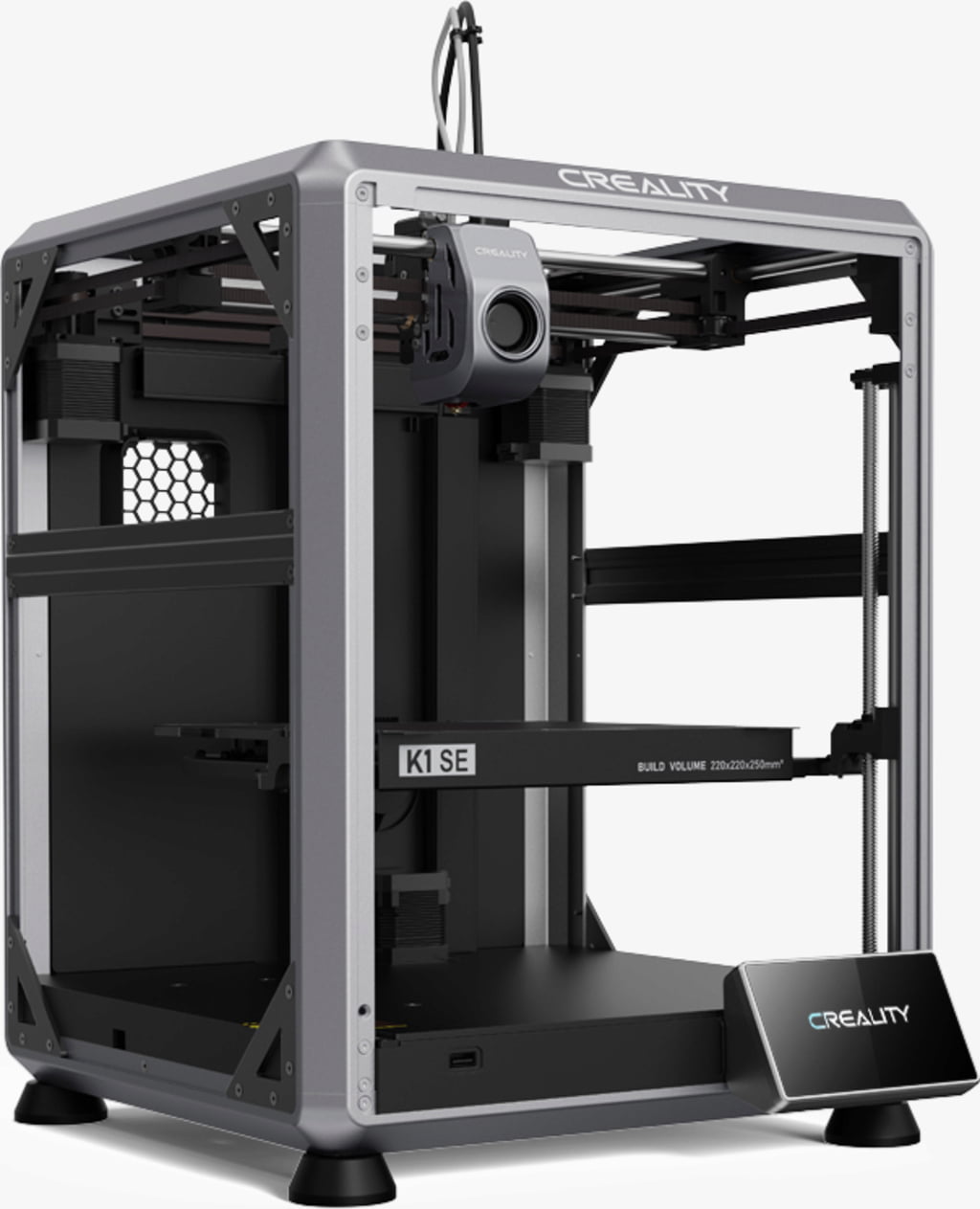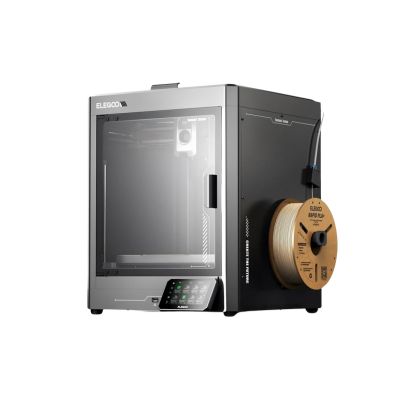Compare K1 SE vs Centauri Carbon
Comparison between the best 3D printers
Choose the best 3D printer at the best price. The cheapest 3D printers are here.
Buy a 3D printer here with 3D Fila.
 |
 |
|
| Model | K1 SE |
Centauri Carbon |
| Printing Material | Filament | Filament |
| Buy Filament for Creality 3D K1 SE | Buy Filament forElegoo Centauri Carbon | |
| Estimated price | $349,00 | $500,00 |
| Manufacturer | Creality 3D | Elegoo |
| Release Year | 2023 | 2025 |
| Print Volume [mm] | 220x220x250 | 256x256x256 |
| Printer Size [mm] | 355x355x480 | 500x500x600 |
| Weight [kg] | 10,24 | 17,5 |
| Power Loss Recovery | YES | YES |
| Enclosed printer | NO | YES |
| Bed Leveling | Automatic | Automatic |
| Filament End Sensor | YES | YES |
| Bed type | Heated | Heated |
| Power supply system | Direct Drive | Direct Drive |
| Standard nozzle | 0,4 | 0,4 |
| Maximum Nozzle Temperature [°C] | 300 | 300 |
| Maximum Bed Temperature [°C] | 100 | 110 |
| Maximum printing speed [mm/s] | 600 | 500 |
| Filament holder | YES | YES |
| Camera for supervision | YES | YES |
| Recommended filaments | Hyper PLA, PLA, PETG, PET, TPU | PLA, PETG, ABS, ASA, TPU, NYLON, CARBON FIBER |
| Recommended slicers | Creality Print; Cura, Simplify3D e PrusaSlicer | Elegoo Slicer, Orca Slicer |
| Maximum Resolution [mm] | 0,1 | 0,1 |
| Processor | ||
| Display | Display touchscreen 4,3'' | Touchscreen 4,3'' |
| Power Supply | 110/220V / 350W | 350 W |
| Connectivity | Ethernet / USB / Wi-Fi | WiFi, SD, USB |
| Operating systems | Windows, Mac, Linux | Windows, Linux e Macbook |
| Date of registration in the system | 2023-08-26 | 2025-02-10 |
| Release date | 2023 | 2025 |
| Extra features | The Creality K1 SE is a high-speed 3D printer with CoreXY system, capable of printing at up to 600mm/s with acceleration of 20000mm/s². It has a dual-gear extruder, easy-to-replace tri-metal nozzle, automatic leveling, and advanced features such as vibration reduction algorithms and intelligent operation. Its rigid cast aluminum frame ensures stability, while the open-source Klipper-based system offers freedom for customization. It is pre-assembled for a simplified and fast user experience. | The Elegoo Centauri Carbon is a CoreXY 3D printer with an enclosed structure, direct drive extruder, and hardened steel components for abrasive materials. It features automatic bed leveling, a touchscreen, a filament cutting system, and an elongated nozzle designed to reduce clogs. It offers Wi-Fi connectivity for remote file transfer and runs on a Klipper-based firmware, providing advanced control and precise adjustments. |
| Support for multiple colors and materials (AMS and CFS) | NO | NO |
Notes * |
||
| Cost-benefit | 7 / 10 | 8 / 10 |
| Hardware | 4 / 10 | 6 / 10 |
| Tela | . | . |
| Print volume | 3 / 10 | 4 / 10 |
| Performance | 5 / 10 | 4 / 10 |
Conclusion |
| ### Conclusion In the comparison between the Creality 3D K1 SE and the Elegoo Centauri Carbon, both printers present unique advantages tailored to different user needs and preferences. The **Creality 3D K1 SE**, priced more affordably, excels in speed and user-friendliness. With a maximum printing speed of 600mm/s and a lightweight design, it caters well to users who prioritize fast prototyping and ease of assembly. Its open-frame structure allows for flexibility in filament choices, although it limits the types of materials that can be effectively used given the absence of enclosure. Additionally, its advanced vibration reduction algorithms enhance print quality at high speeds. In contrast, the **Elegoo Centauri Carbon** offers a more robust and enclosed design, which is beneficial for printing a wider range of materials, including those requiring higher temperature settings. Its larger print volume accommodates bigger projects, making it ideal for users who need versatility and the ability to work with advanced filaments. The inclusion of hardened components allows for more durability, especially with abrasive materials. While the K1 SE brings excellent speed and cost-effectiveness, the Centauri Carbon may provide better long-term value for users focused on variety and material capabilities. Overall, the choice between the two depends largely on the user's priorities—speed and cost-efficiency versus material flexibility and larger build volume. |

